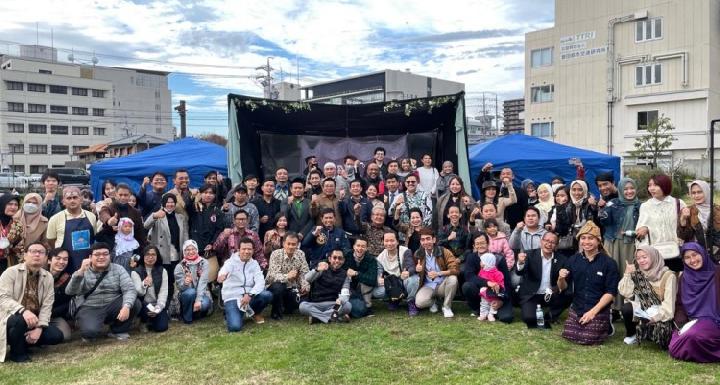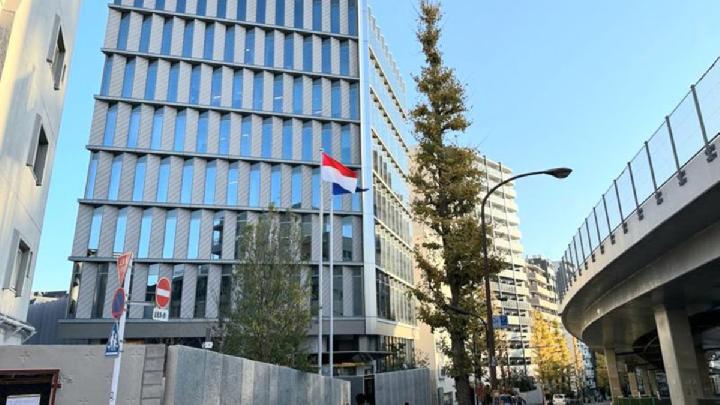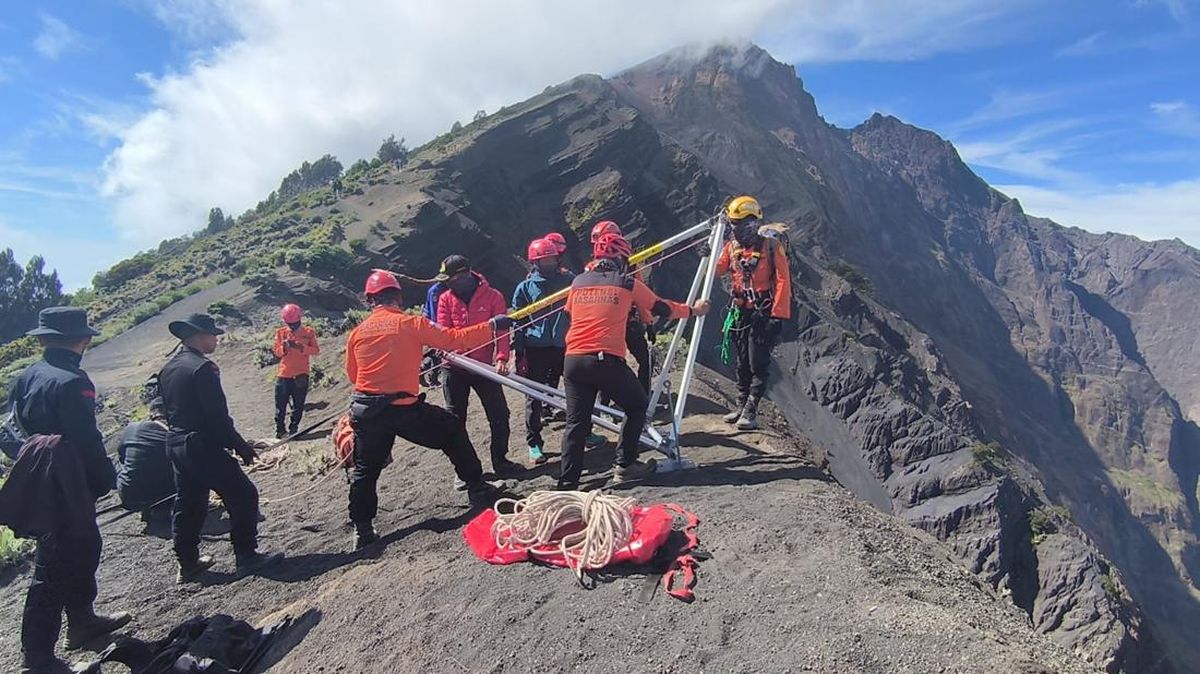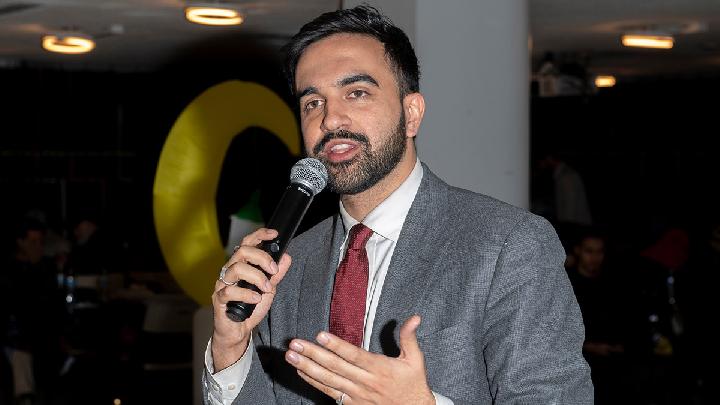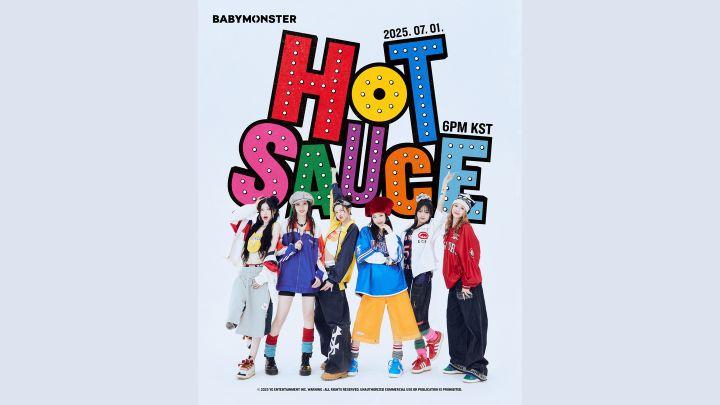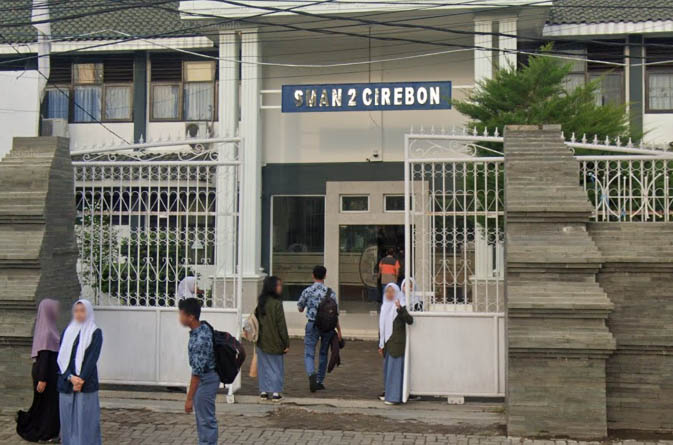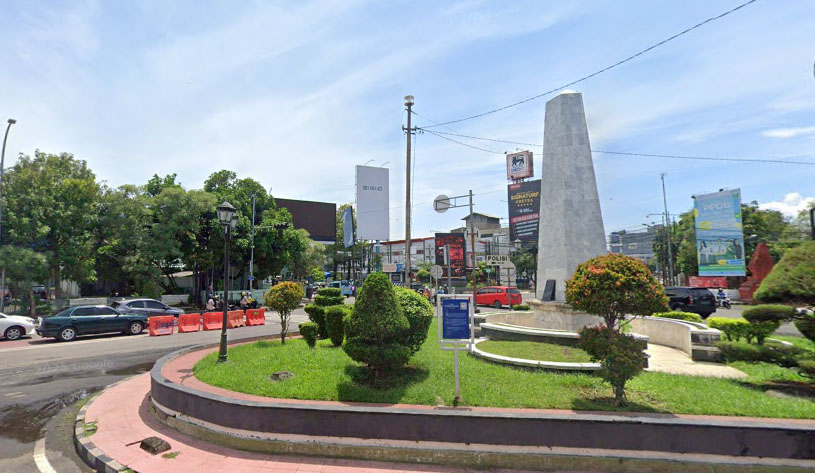A hard pitch, big goals and tired keepers were the final straws.
Roy Keane had had enough, and what would follow was a series of events so extraordinary that they divided Ireland down the middle during the unforgettable summer of 2002.
Keane was sent home from a World Cup training camp on the remote island of Saipan, a three-hour flight from Japan in the US overseas territory of the Northern Mariana Islands, following a showdown with team manager Mick McCarthy.
Attempts to repair the damage included an offer from the Taoiseach of the time to intervene, a melodramatic interview on RTÉ watched by millions, and an insight into the shambolic workings of the FAI that would later become wearily familiar.
Friendships were under strain, families rowed furiously over what side you were on, and there had never been anything like it in Irish sport.
With the upcoming dramatisation Saipan starring Steve Coogan and Éanna Hardwicke pitching it back into the spotlight, it’s an opportunity to revisit a truly remarkable time when sport took a back seat, and an Irish row became the centre of global attention.
Mick McCarthy, the Ireland manager, looks on as captain Roy Keane shows his frustration during training in Saipan ahead of the 2002 World Cup
Keane was unhappy with, among other things, the facilities available in the Irish camp - then stormed out and went home, leaving his team to pick up the pieces
It was even claimed that nuclear tensions between India and Pakistan were kept off the front pages of those countries’ newspapers by breathless accounts of what Keane had said to his manager in a bust-up in the team hotel.
Almost a quarter of a century on, it’s the story that never grows old, and which retains the power to raise temperatures and cause old ghosts to stir again.
Keane was head and shoulders ahead of any other Irish player of his generation. The players knew this, too; Kevin Kilbane, one of his team-mates, said he was the best player in Europe during the qualification campaign for the 2002 World Cup.
‘People talk about Scholes and Gerrard, but Roy was better. Make no mistake about that,’ he said years later.
However, his relationship with McCarthy was poor from the outset. There was an infamous incident on Keane’s first tour with Ireland as a player, when he was still 20 years of age. It was to the US in 1992 under Jack Charlton, with McCarthy the veteran in the squad. He had long served as Charlton’s on-field deputy, and he had no hesitation in helping to set the tone among the players.
At the end of the tour, the squad went on a day-long bender, with Keane continuing the party with some team-mates through to the following morning.
They were late back to the hotel and left the whole party in danger of missing their flight, and so Charlton took them to task. Keane was in no mood to back down, and when McCarthy intervened Keane tackled him, too. Their row got so heated that others had to intervene.
Recollections have differed over the years, but one version has McCarthy upbraiding Keane with the question, ‘You call yourself a professional?’. Keane fired back, ‘You call what you’ve got a first touch?’
The saga has been made into a film called Saipan featuring Steve Coogan (left) and Éanna Hardwick as McCarthy and Keane respectively
A poor relationship got no better when McCarthy took over as Ireland manager four years later, in 1996.
This was widely known in the Irish game, but the pair managed to find a working accommodation, and it was clear that McCarthy instantly understood that Keane was the best Irish player by a mile, and the new manager was prepared to recognise that.
His first game in charge ended in a home defeat to Russia, in which Keane was sent off. By then he was wearing the captain’s armband, having been handed it when Andy Townsend was substituted. Keane was the obvious choice to lead a new generation under a young manager, but getting dismissed was an ominous portent of what was to come.
Keane was also frequently absent from McCarthy’s squad during his first two qualifying campaigns, for the 1998 World Cup and Euro 2000.
In the former, he played in six of Ireland’s 12 qualifiers, including defeat in a two-legged play-off against Belgium, with his playing time severely disrupted by the cruciate ligament injury he suffered in 1997.
By the time qualifying began for the 2002 World Cup, though, Keane was in supreme form, still the stand-out in a talented squad that included Shay Given, Steve Finnan, Damien Duff and Robbie Keane - a quartet that went on to win a combined 433 caps for their country.
Throughout Ireland’s qualifying group, Roy Keane was magnificent, and he saved perhaps his finest performance for his country for the pivotal game, a 1-0 home win against a brilliant Dutch team in Dublin. Jason McAteer scored the goal that guaranteed Ireland a play-off place, but Keane was the inspiration.
He wiped out Marc Overmars with a late tackle after 30 seconds that would be a clear red card in today’s game. All it did in the match, though, was spook the Dutch and send a fervent Dublin crowd wild for more. Keane had set the tone, and he made sure it was maintained for the rest of the match.
Jason McAteer scores the all-important goal to beat the Netherlands in 2002 World Cup qualifying
Keane's crunching tackle on Overmars toed the line of legality, but set the tone for a fine Irish display
Keane admitted to having 'no respect' for his Ireland boss McCarthy
Remarkably, though, in this moment of great triumph, the deep cracks in his relationship with McCarthy were exposed to the world and captured in one of the most renowned photographs in Irish sport.
It was taken at the end of the game as Keane, shirtless, is walking off the field and shaking hands with McCarthy. But Keane is looking away, his body turned away from the manager, a look not so much of seriousness but dismissiveness on his face. McCarthy is leaning in like a supplicant, extending his hand to a man who clearly has no interest in it.
In light of what would detonate on Saipan nine months later, it was an image that perfectly captured a dysfunctional relationship.
Ireland would go on to seal their place at the World Cup with a two-legged play-off win against Iran. Keane played in the first leg but didn’t travel to Tehran for the second, as per an agreement between Manchester United and the Ireland squad. That decision would, though, go on to spark the most famous unforgettable row in Irish sport.
Before they left for the East, Ireland had a game to play in the north of England. Keane wasn’t part of it, however, and that was the first spark in the coming conflagration. He didn’t play in Niall Quinn’s testimonial game on May 14, just days before the Ireland squad departed for their training camp in Saipan.
The game was feelgood celebration at the Stadium of Light between Sunderland and Ireland that raised over £1million for children’s charities in Dublin and the north-east city. Keane didn’t feature because of injury, but his absence from the event caused controversy. Some of his critics accused him of disrespect, despite all sides apparently knowing he wouldn’t be there.
Keane insisted he didn’t travel to Sunderland because he wasn’t fit. He had been receiving specialist treatment in France to help with a growing list of injuries, and he was adamant that both McCarthy and Quinn were aware of this and understood that he wouldn’t feature in the testimonial.
Nor was he interested in attending and watching from the stands, preferring to spend some time with his family before departing for what should have been a minimum five-week trip to the World Cup.
Sparks between the two began a decade before the Saipan row, when Keane and McCarthy were still playing
McCarthy eventually decided to send Keane home from the World Cup in 2002
The reports of his absence infuriated Keane, however, and when the Irish squad departed for Saipan from Dublin Airport two days later, complimentary newspapers were handed out among the squad, who were in business class.
When Keane read some of the accounts of the testimonial, he left his seat and went into economy, where most of the travelling Irish press pack were located. The captain of Ireland and Manchester United, and one of the most famous players on the planet, then started to berate some of them. It’s worth remembering that Keane had long-standing problems with some journalists, difficulties that would persist right through to his time assisting Martin O’Neill almost a decade later.
But it was an inauspicious start to a journey that would only get worse when they landed on a remote island that few knew anything about on this side of the world. Within days, Saipan would be globally known – and become an imperishable part of Irish folklore.
The Battle of Saipan was a successful US military attack against Japanese naval positions in the summer of 1944, a crucial strategic win for the Allies that heaped more pressure on a desperate Japan. Over 1,000 civilians died by suicide by throwing themselves off cliffs rather than surrender to the US forces, who had been portrayed as cruel and monstrous by Japanese propaganda.
The place was less well-known as a place for some recreation and light preparations ahead of Ireland heading to Japan, but that was the plan of the FAI. Anecdotal reports claimed officials chose Saipan because an ex-pat with knowledge of the island bumped into a travel agent at an airport and told him about it.
Keane’s saturnine mood grew only darker on landing with news that couriers had failed to deliver training gear on time. Then the pitch used for training was hard. McCarthy organised a barbecue with the media that turned very boozy. Though Keane didn’t attend, it was further evidence, he believed of shoddy planning.
It was a five-a-side kick-about at the end of training that prompted his first threat to leave, though. The goalkeepers didn’t take part because they said they were tired from training. Keane protested, arguing they couldn’t have a proper game without keepers, and he had a row with one of them, Alan Kelly.
This all took place in view of reporters, and when he returned to the team hotel, Keane told McCarthy he wanted to go home. From the many accounts of the time, there is no evidence of the manager going to every length possible to keep his star man, perhaps betraying just how fed up McCarthy had become with his team’s talisman.
McCarthy and Keane meet again as managers of Wolves of Sunderland in 2006
McCarthy talks to the media, flanked by Quinn, to explain his decision to send Keane home
Eventually Keane was talked around – not by anyone within the camp, but by a combination of family, his trusted agent, and the manager of United. We know all this because Keane gave an exhaustive account of it almost in real time. The Irish Times published a sensational interview with him hours after the row – and only hours before the volcanic showdown with McCarthy that sealed Keane’s fate.
This would prove the fateful interview that led to McCarthy sending him home.
It’s fascinating now to read how much trust he placed in Alex Ferguson, given the irreparable collapse of their relationship that would follow only three years later.
‘He’s a good man and he gave me good words of advice,’ said Keane then. ‘You have to listen to these people. The manager (Ferguson) has the same temperament as me. He understood what I was going through. He told me to stick it out, but this is it.’
This would be his last time in an Irish squad, he vowed. ‘I’ve decided I’m here for myself and the people of Ireland and my family. Sod everybody else. This will be my last trip. I can’t go banging my head against a brick wall. I can’t. Sometimes you have to make a stance. If there was a flight yesterday, I’d be home now, and I wouldn’t have felt bad about it.’
Too much analysis of Keane during his playing career and since, has relied on anti-Irish tropes, and his international career was in large part spent railing against the worst tendencies of old Ireland.
‘But you know, we’re the Irish team, it’s a laugh and a joke. We shouldn’t expect too much,’ he said with disgust in that same interview.
When it appeared online, it was one of the first viral news stories in the country. Reporters were at Irish training when it appeared, and some recall rushing to an internet café across the road to print it off. One McCarthy ally furnished the manager with a copy. The stage was set.
Keane gave a handful of blockbuster interviews around the time of the incident explaining his thoughts in no little detail
Keane was asked to apologise to his team-mates for an interview with the Irish Times calling out their preparations for the World Cup
The players were summoned to a meeting with the management, and everyone knew what was coming. There was a fittingly farcical beginning to the occasion, though. Some of the players prevailed on a singer who was entertaining guests to come in and play some songs.
McCarthy arrived and had to wait for this bar-room crooner to wrap up before getting down to business. But when he did, it didn’t take long for the explosion to come.
The manager confronted Keane with the print-out of the interview with The Irish Times, and said he owed his team-mates an apology. Keane asked what he had to apologise for, and the situation escalated in an instant.
McCarthy mentioned Keane missing the second leg of the Iran play-off, and that was the breaking point. Nothing would ever be the same again. Keane took it as McCarthy suggesting he had faked an injury to get out of the game.
There followed an expletive-laden outburst that Keane faithfully detailed in his first autobiography, which came out at the end of that summer of 2002.
‘You’re a f***ing w***er,’ he told McCarthy. ‘I didn’t rate you as a player, I don’t rate you as a manager, and I don’t rate you as a person. You’re a f***ing w***er and you can stick your World Cup up your arse. I’ve got no respect for you.’
Witnesses have since described it as the most devastating, precise takedown of a person they had ever witnessed. By these accounts, and by his own, Keane was not roaring and shouting. Instead, he vaporised his manager with a steady voice and merciless words.
After their relationship had fallen apart, Ferguson claimed that the hardest part of Keane was his tongue. On that night in Saipan, there was a roomful of stunned footballers and coaches who would have agreed.
Keane refused to apologise to his teammates after giving an interview to The Irish Times while out in Saipan
The damage was done and there was no convincing Keane to patch up the row
The aftermath was chaotic. The time difference was a complication for news outlets, but it would also prove a major headache in the futile attempts that were made to broker a peace deal.
It’s also easy to forget that technology that has shrunk our world was much more rudimentary in those days. But in truth there was no patching up this row. It didn’t stop many trying, including, remarkably, then-Taoiseach and avowed football fan Bertie Ahern. He was convinced he could have helped.
‘I have been in rooms where people have said the most terrible things to each other, and then the following morning we have to sit down and continue the discussion,’ Ahern recalled on the 20th anniversary of the row. ‘In the heat of an argument people forget what the purpose is.
'I did union discussions for years, political discussions, Northern Ireland peace talks. When people forget what the argument is, it gets personal, and animosity builds up. Unfortunately, I never got to mediate and neither did anyone else, which is the sad thing about it all.’
This time, there was no coming back and Keane left for home. He was besieged by journalists at the airport, and the few words he offered confirmed that he had no regrets. By the time he got to his home in Hale, a well-appointed Manchester suburb, it was surrounded by news outlets.
Keane would emerge every day to walk his dog, a golden Labrador called Triggs who soon became the most famous pet on the planet. The player kept his head down and his thoughts to himself, while on the far side of the world, McCarthy tried to piece together a World Cup campaign that was due to begin against Cameroon in just nine days’ time.
This included one day when the attempts to broker a solution were at their peak, that included four press conferences, featuring a rotating cast of officials, players and management – none of whom had any influence on Keane to start with.
Once McCarthy appeared for media duties flanked by senior players Stephen Staunton and Niall Quinn, though, the support of the squad for the manager’s decision was clear.
Keane walks his dog Triggs near his home in Hale, Manchester, while his teammates prepare for the World Cup in Japan. Triggs became the most famous pet on the planet
Ireland got out of their group but were beaten on penalties in the last 16 by Spain
Only two managers have had better win percentages than McCarthy as Ireland boss - his predecessor Jack Charlton and his successor Brian Kerr
RTÉ managed to secure an interview with Keane, conducted by a veteran political correspondent, Tommie Gorman. He memorably pleaded with Keane to think of the children of the nation who would feel let down by what happened, but peace was never in question.
Ireland would go on to make the last 16 of the tournament, thanks to a late Robbie Keane equaliser against Germany, before they lost to Spain on penalties. It was an unremarkable tournament won by a decent Brazil team, but there has been two decades of unconvincing revisionism arguing that Ireland could have got to at least the last four with Keane in the side.
But what the efforts to get Keane back did betray was how vital he was to the national team, and each twist in the story further undermined McCarthy.
He would resign two games into the failed Euro 2004 qualification campaign, following defeat away to Russia and a poisonous home defeat to Switzerland in which public support for Keane was made volubly clear.
Brian Kerr replaced McCarthy, and he managed to coax Keane back into the international fold for nine more appearances. Keane would go on to enjoy three more years of success with United until the brutal sundering of his ties with that club.
Much of what he complained about at the FAI was subsequently justified, with the association struggling with years of scandal and dysfunction, the effects of which are still being felt. McCarthy would come back to manage the national team a second time – succeeding the O’Neill-Keane ticket.
Both are still asked about Saipan, with neither showing much inclination to return to the weeds of that time – but then stoutly defending themselves once they inevitably do.
But if it was a row that split Ireland, time has been increasingly kind to Keane’s position. McCarthy is one of the most loved players in the history of the national team, the Captain Fantastic of the Charlton years. But his defence of his methods in Saipan has come to be seen as another instance of the FAI defending inadequacy.
The Republic of Ireland crashed out of the 2002 World Cup in the last 16 round when they lost on penalties to Spain. Kilbane missed the crucial spot kick
Robbie Keane and Quinn arrive back in Dublin after the World Cup. McCarthy agreed to stay in his post for two more years after what was considered a spirited campaign by Ireland
It’s important to remember, too, that 2002 was the height of the Celtic Tiger, a brash time when Ireland was in the midst of an economic miracle. Keane came to be seen as embodying the virtues of new Ireland: bold, ambitious, ruthless and making no apology for any of it.
The Celtic Tiger would collapse even more cataclysmically than the World Cup dream.
Keane, though, through a second life in broadcasting that displays his trademark candour but also a sharp sense of humour, remains as popular as ever in the country, and feels as relevant as ever.
McCarthy is respected as a decent man who did his country proud. But in the modern Battle of Saipan, the honours went to Keane.
The two protagonists of Saipan have enjoyed long and varied careers in the 23 years since. But no matter what they do, Roy Keane and Mick McCarthy remain bound by the events over the course of three days on a non-descript naval base in the middle of nowhere. And no matter what they say, it’s very clear that the controversy remains a vivid experience in the lives of both of them – and one that neither man is willing to easily let lie.
ROY KEANE
Keane's words and actions in Saipan have been endlessly debated in the two decades since.
While opinions have been revised with the passage of time, the man himself has stuck rigidly to his position. It was detailed most forensically in his autobiography, which was published in 2002. Mick McCarthy published his World Cup diary later that year – but it paled in comparison with Keane’s explosive book.
His motivation for a gruesome tackle on Alf Inge Haaland would land him with a heavy fine and a long ban, and caused a sensation in the Premier League. But for an Irish audience, attention was mostly focused on his recollections of Saipan.
This was the first draft of an explosive history, and the media around the publication of the book helped him to push home his message. He gave a long interview to The Observer in September 2002, conducted by Sean O’Hagan, a veteran journalist who spent hours in a Manchester hotel with Keane.
Keane went on to become manager of Sunderland, following in the footsteps of McCarthy
He was also assistant manager - to Martin O'Neill - with the Republic of Ireland
The piece ran to more than 7,000 words, and included a brutal dismissal of Jack Charlton as a ‘miser’. (This is one opinion Keane has revised, incidentally, as he has spoken warmly of Charlton and his approach in the years since).
The heart of the piece was Keane sticking rigidly to the position he took in Saipan. He also went to great lengths to rebut a claim that during his tirade against McCarthy, he had called him ‘an English c***’.
‘No. No way,’ Keane told O’Hagan. ‘I have to live in England, and to be accused of saying that sort of thing, it’s not nice for my wife and family. But they (the FAI) let that run too. The FAI could have killed that, and Mick could have killed that.’
O’Hagan asked him if he had any regrets about the episode. ‘No. Not one. I’d do it again tomorrow,’ he said. ‘I wouldn’t change a thing. And I’m not trying to say I’m not 100 per cent clear of the blame. People say, “Why didn’t you just bite your tongue?” But I’ve done that hundreds of times.’
He smiled in that interview when asked if he could see himself managing Ireland one day. But he didn’t rule it out. The closest he’s got so far is assistant to Martin O’Neill for five seasons, from 2013 to 2018.
Saipan was the towering backdrop to that appointment, with O’Neill asked about it at the press conference unveiling him as national manager. He revealed he thought Keane was wrong to miss the tournament – with Keane telling him in return he thought O’Neill had picked the wrong side for Celtic’s UEFA Cup final defeat to Jose Mourinho’s Porto in 2003...
Towards the end of his time in that role, Keane spoke to a UTV podcast about 2002. It was part of a preview of the 2018 World Cup, and Keane reiterated once again that he had no reason to doubt his decision then. And he reaffirmed it wasn’t the sloppy preparation that pushed him over the edge, but the suggestion he missed the Iran game for no good reason.
‘What really made me angry and disappointed is when you get accused of something by your manager in front of a group of players, you’re going to react – and I reacted,’ he said.
He has now forged a successful career as an outspoken television pundit
Keane will occasionally, but reluctantly, talk about the Saipan saga
‘As a senior player and captain, I just felt, “They are lies”. I was basically accused of faking an injury and not being available for a match, when I was injured.’
Last year, during an episode of Stick To Football – his popular podcast with Gary Neville and others – Keane was asked by Neville about his biggest regrets in international football.
‘Are you opening that can of worms?’ Keane asked with a grin. It was a reflective interview, with Neville clearly having done his homework, and during which he also probed his relationship with McCarthy.
Keane said it was never close, from his time breaking into the Ireland squad as a young man barely out of his teens.
‘Mick wouldn’t have made any effort for me, but that was fine,’ Keane said.
Neville asked him if he could have done anything differently. ‘The hang-ups I had for Ireland went back many years,’ replied Keane, who also revealed that he once told a journalist privately that he didn’t respect McCarthy, but word got back to the manager. It would later come up in their Saipan showdown.
‘I just didn’t respect him,’ he told Neville.
And he concluded that conversation by reiterating a point he has made over and over again. ‘Regrets? None, and I didn’t lose a wink of sleep over it.’
MICK McCARTHY
Following his resignation as Ireland manager, McCarthy returned to club management and built a respected career on the margins of the English game’s elite.
In his farewell press conference with Ireland, he said he was leaving ‘for the good of the team’, reminding the assembled media that ‘it’s not the Republic of Mick McCarthy, and it’s not the Republic of Roy Keane, either’.
He took over Sunderland in the spring of 2003. And while he couldn’t save them from relegation, he got them up two seasons later. He was sacked in March 2006, and would be replaced six months later by Keane as permanent manager.
By then, McCarthy was at Wolves, and before the teams met in a cup match in November 2006, there was fevered speculation about whether they would share the customary handshake between opposing managers before kick-off.
Both confirmed they would beforehand, with Keane revealing they had spoken and McCarthy adamant he would welcome Keane into his office for a post-match drink.
‘I will shake his hand, of course I will,’ he said, ‘and it will be a genuine gesture and not something for the TV cameras. I will also ask Roy into my office for a drink afterwards. I know he doesn’t drink alcohol but I’ll pour him a lemonade or a cola or a coffee or whatever he wants.’
One of the most insightful comments from McCarthy on Saipan came towards the end of the O’Neill-Keane era with Ireland, when McCarthy appeared at a corporate event organised by a bookmaking firm.
He confirmed he and Keane had had a ‘pretty sh**e’ relationship in the years leading up to Saipan. He made particular mention of their bust-up in the US in 1992, recalling how he had had to pack some of the players’ luggage because they were running so late.
McCarthy, with senior player Quinn, explains his side of the story to the media after Keane's exit
‘They all come on [the bus] and I’m having a dig at them,’ said McCarthy. ‘I’m the captain, I’m the manager of Millwall at the time. So I’m saying “the bus is going, we need to go, we’ve a plane to catch”. Then, of course, [Keane] gives me a mouthful. So I’ve gone to have a dig at him back. And we had to be split up. I was never intimidated by him. But that was it.’
McCarthy did acknowledge Keane’s quality, recalling the latter’s third match for Ireland in 1991. That was when he realised how good his new team-mate could be. ‘We played in Hungary – Roy was amazing that game,’ said McCarthy. ‘You could see how good a player he was going to be. Without a doubt, he was one of the best players I’ve played with, or managed.’
But in the same appearance, McCarthy expressed his bafflement at the attention Keane received as O’Neill’s No 2. His words, perhaps, betrayed his lingering issues. ‘All I will say is this: he’s the only assistant manager in the whole of the world who gets this much publicity, nobody else. TC [Terry Connor], my assistant, never got a mention. It’s like Roy Keane’s Ireland. It’s bonkers, in my view.
‘He should be assistant Martin O’Neill. It shouldn’t be Martin having to mop up anything else.’

 3 hours ago
10
3 hours ago
10






























